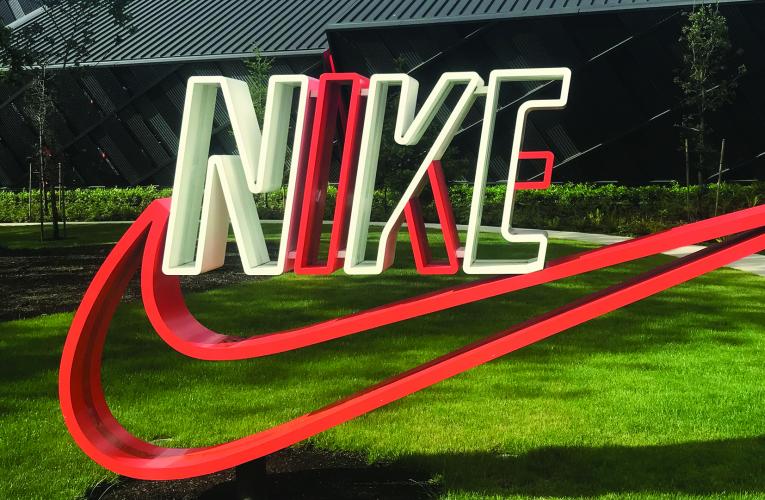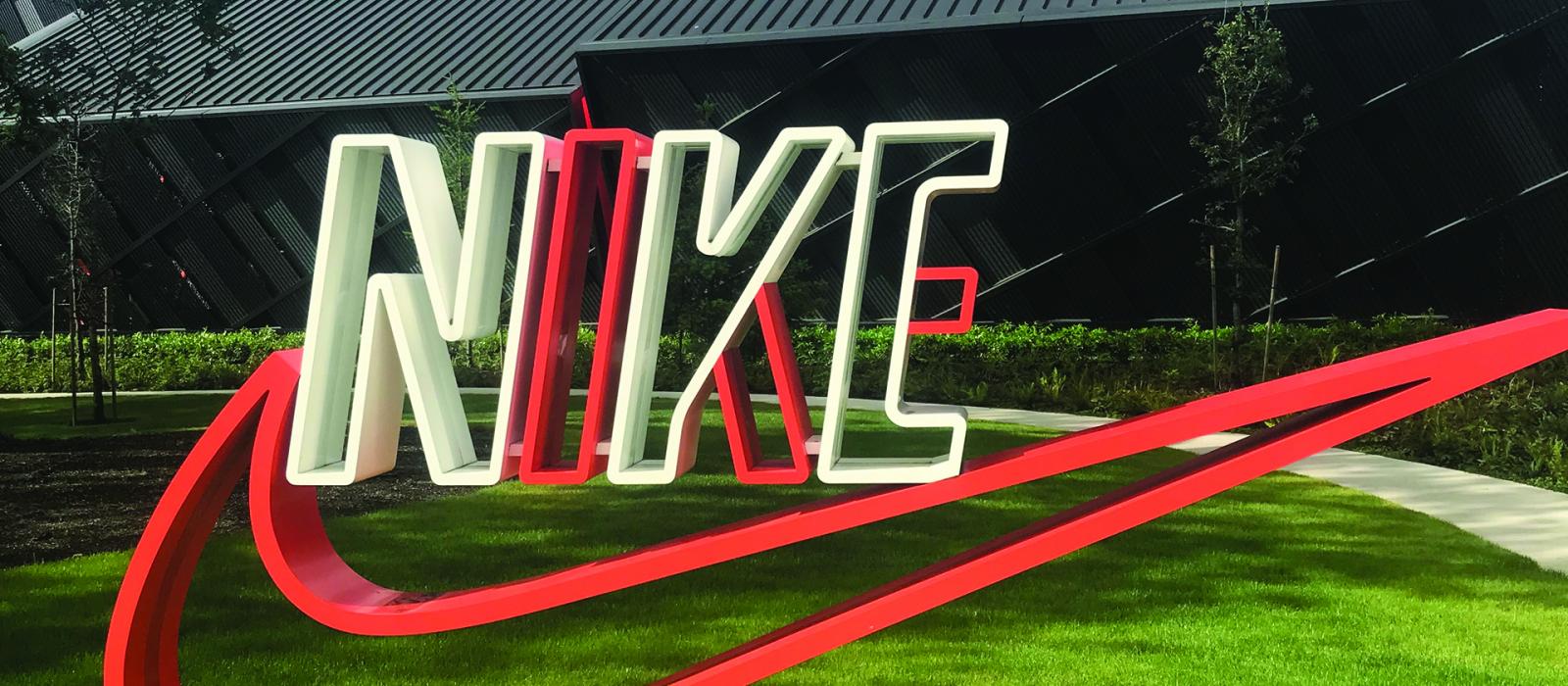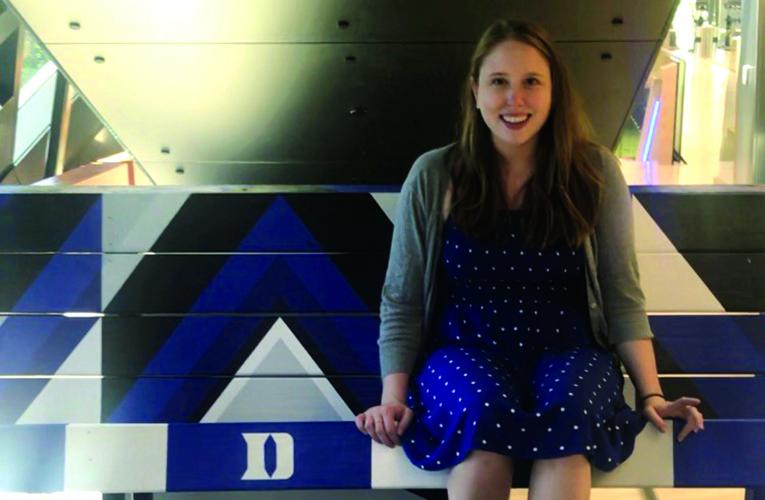Alex Marchyshyn, MEM/MBA’20, has stitched together the foundation for a bright future focusing on sustainable fashion. Her work experiences and studies focus on the intersection of business, the environment and supply chain, with the goal of fostering change within the apparel industry, ensuring greater ecological responsibility and integrity.
Marchyshyn is the creator of SustainableFashion101.com, a website designed to be a resource to help young professionals and college students be more sustainable and economical in their fashion choices. The website was part of a larger project for which she won Wear It Wise’s Sustainable Fashion Challenge in June, 2018.
This past summer Marchyshyn served as a Global Sustainability Intern for Nike, at their world headquarters in Portland, Oregon.
HOW DID YOU FIND OUT ABOUT THIS INTERNSHIP OPPORTUNITY AT NIKE?
I networked with MEM/MBA and Nicholas School of the Environment alumni from spring of my first year onwards. Nike’s Sustainability Intern in 2018 was a Fuqua student, and I made sure to speak with him and a few other second years who had interned at Nike to learn more about the culture and opportunities.
HOW DID YOU PREPARE FOR YOUR INTERVIEW? HOW WAS THE INTERVIEW CONDUCTED?
I’ve always been interested in the company and had been following sustainability news about them for years. However, once I got the interview, I stepped up my research by reading current news articles, their 10-K and the most recent impact report. While it’s rare for a sustainability position to interview on campus, the Nike hiring team came to Fuqua for in-person interviews. A NSOE alum (Adam Brundage, MEM’07) was the one who interviewed me.
WHAT WERE YOUR PRIMARY RESPONSIBILITIES/DUTIES AT NIKE?
I was on the Sustainable Product team working on marketplace integration. My project this summer was to create a strategy to integrate sustainability into Nike’s membership program. Nike’s membership program has over 170 million members, so it’s a great opportunity to reach consumers at scale.
ARE THERE 2 OR 3 SKILLS YOU LEARNED AT THE NICHOLAS SCHOOL THAT YOU PUT TO USE AT THIS INTERNSHIP?
Stakeholder mapping and engagement was absolutely critical, especially in a very matrixed and consensus-driven organization like Nike. Knowing your stakeholders and their priorities was essential to building the consensus needed around the strategy.
Another important skill I utilized was making the business case. I think the Nicholas School does a great job emphasizing the importance of finding the link between the business and sustainability. This summer offered the opportunity to link sustainability with a specific segment of the Nike consumer. By leading with the business case, it was far easier to secure buy-in to ensure that the project would continue after the summer.
WERE THERE 1 OR 2 STAND-OUT EXPERIENCES WITH THIS INTERNSHIP THAT YOU CAN SHARE?
I was paired with a team that gave me a lot of trust and responsibility. Because of this, I got incredible opportunities to be a true project manager. A highlight for me was designing and running strategy workshops for my project. Getting key stakeholders in the room and ideating on the best way forward was exciting and extremely helpful when proposing the strategy.
Of course, since it’s Nike, you get to see athletes all the time. My top three encounters were seeing members of the 1999 USA Soccer Women’s World Cup team, almost running straight into LeBron James in the hall and seeing former NBA star, Yao Ming.
FROM YOUR EXPERIENCE, WHAT ARE 1 OR 2 WAYS YOU SAW NIKE PRIORITIZING SUSTAINABILITY IN ITS PRODUCTION?
One of the most recent ways that Nike prioritizes sustainability in its production is through its Circular Design Guide. Released in May at the Copenhagen Fashion Summit, the Circular Design Guide is an open-source workbook for designers and other product creators that highlights and defines ten principles that should be considered for circular fashion. Some of the principles include material selection, deconstruction and waste avoidance. The goal is to think about circularity at the beginning of the process – not when a product is already at the end of its life. This holistic approach benefits not only Nike, but the rest of the industry.
YOU’VE MENTIONED “YOU COULD FEEL THAT EXCITEMENT AND MOMENTUM THIS SUMMER.” WHAT WAS THAT LIKE?
It was really exciting! I started my sustainable apparel journey in 2013, and at the time, there was very little out there, both in terms of consumer interest and corporate movement. Since then, especially in the last year and a half, the momentum across the industry is undeniable. It feels like every day there is a new company making commitments around sustainability. While Nike has been working on these issues for a long time (its Reuse-a-Shoe program that upcycles used athletics shoes has been around since the early 90’s), even there it felt that sustainability was gaining even more momentum and was a key priority of the Nike C-Suite. Feeling the energy and excitement of the team and learning all the amazing things that are in the works was so energizing– I was excited to come to work every day.
HOW DID THIS INTERNSHIP INFORM YOUR UNDERSTANDING OF CORPORATE SUSTAINABILITY?
It reinforced that sustainability has to be embedded in the organization, and can’t be siloed. One of the most exciting things about Nike is that the new CSO (Noel Kinder) has made a push to integrate sustainability into different divisions such as product or innovation so Nike’s sustainability professionals can understand the needs and pain points of each team and collaborate to find sustainable solutions.
HOW DOES YOUR INTERNSHIP AT NIKE ALIGN WITH YOUR CAREER GOALS?
Fashion is one of the world’s most polluting industries (second only to oil and gas), and it’s something that we all have and wear on a daily basis. I want to continue my career working in the apparel industry to unlock sustainable solutions at scale – whether that is through the supply chain or by engaging and working with consumers. There is so much white space and potential in this industry, and I’m excited to be a part of the continuing momentum towards sustainable solutions.
NIKE IS A GLOBAL BRAND AND INDUSTRY LEADER. HOW DO YOU SEE THIS AS AN OPPORTUNITY FOR IMPACT AT SCALE?
Before coming to school, I worked at the Environmental Defense Fund. Through its groundbreaking partnership with Walmart, I learned the importance of creating impact at scale. What a lot of people don’t realize about Nike is that it is such a large producer. That is an incredible opportunity to implement sustainable solutions at scale and to influence and inspire the rest of the industry. Being positioned in both footwear and apparel offers an incredible opportunity to not only green its own supply chain, but to lead the way for other companies.


